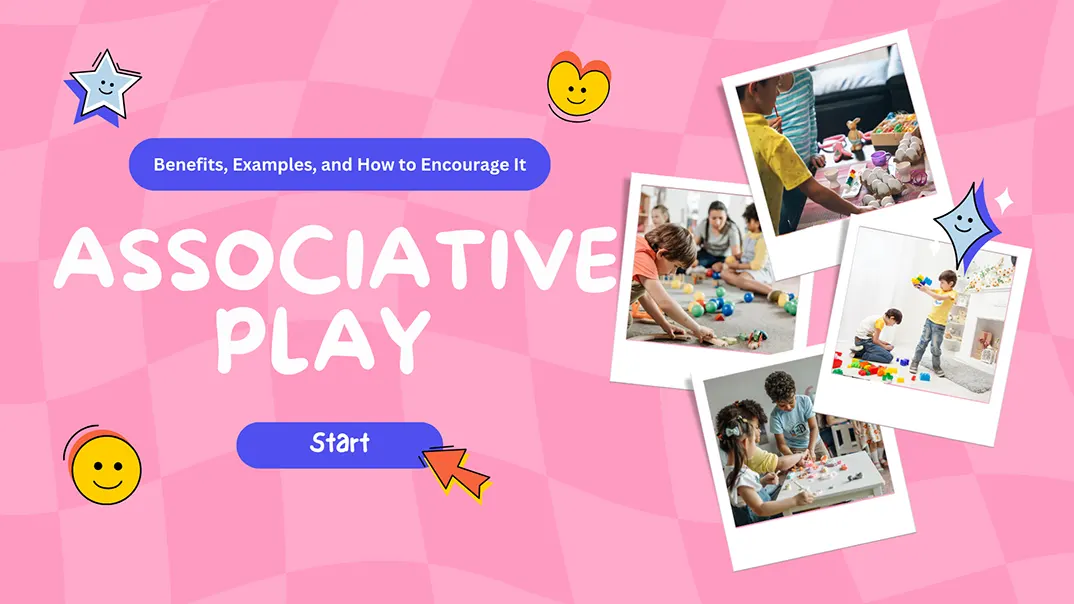Have you ever noticed young children playing near each other, chatting, and sharing toys, but without following the same rules or working toward a common goal? Are they truly playing “together,” or simply playing side by side? Is this behavior beneficial for their growth?
This behavior may look unstructured, but it’s an important developmental milestone known as associative play. Associative play typically emerges between the ages of 3 and 4 and represents a shift from independent or parallel play toward more socially interactive experiences. Understanding associative play helps adults recognize how children build early social, language, and emotional skills through everyday interactions.
In the sections that follow, you’ll uncover the powerful benefits of associative play, see real-world examples of how it unfolds, and learn simple strategies to encourage it at home or in the classroom. Keep reading to unlock how this dynamic play style shapes young minds and fosters healthy peer relationships.
What Is Associative Play?
Associative play is a critical stage in early childhood development where children begin to interact with one another while engaging in similar activities. Although they may not yet work toward a shared goal or follow structured rules, they start to communicate, share materials, and observe each other’s actions. It typically occurs after parallel play and before cooperative play in the stages of social development. Understanding this form of play helps parents and educators recognize how social skills begin to emerge naturally through play.
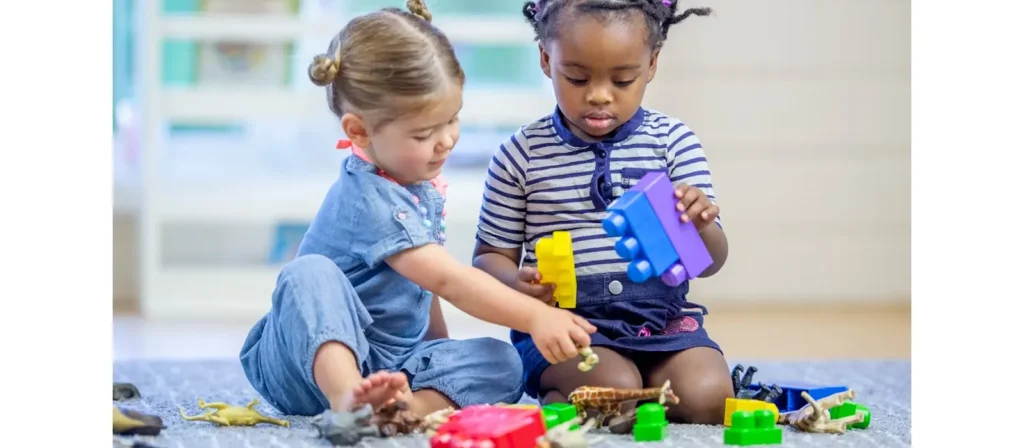
Associative Play Age Range
Associative play typically appears between the ages of 3 and 4 years old. At this stage, children have moved beyond simple parallel play—where they play side by side without interaction—but haven’t yet developed the cooperation and rule-following behavior seen in later stages of group play. It serves as a bridge between playing independently and engaging in fully jeu coopératif.
Characteristics of Associative Play
During the associative play stage, children begin to move beyond solitary and parallel play by engaging more directly with their peers. While they are still focused on their activities, they begin to show interest in others around them. This stage marks a subtle but important shift toward social interaction, laying the groundwork for cooperation, communication, and empathy.
Here are the key characteristics of associative play:
- Shared space, separate goals – Children play in the same area and use similar materials, but each follows their own play agenda.
- Increased verbal interaction – They may talk, ask questions, or make comments about what others are doing.
- Sharing of materials – Toys, art supplies, and props may be exchanged or used communally, often without conflict.
- Imitation of peers – Children often copy actions, ideas, or language used by others during play.
- Minimal planning or rules – There’s no structured group objective or coordinated roles, though there’s interest in others’ participation.
- Emerging social awareness – Children begin to acknowledge others’ presence, preferences, and reactions, even if not fully cooperating yet.
Associative Play Examples
Here are a few everyday examples of associative play:
- Two children are coloring pictures at the same table and commenting on each other’s drawings.
- A small group of preschoolers is building with blocks, occasionally borrowing or exchanging pieces.
- Children playing with dolls side by side, talking about their characters, but without following a shared storyline.
- Kids riding tricycles around a playground, talking and laughing as they go.
The Six Stages of Play: Where Associative Play Fits
Child development experts often refer to the six stages of play first identified by sociologist Mildred Parten in the 1930s. These stages describe how children’s interactions with others evolve over time. Understanding where associative play falls within these stages can help parents and educators identify and support age-appropriate social growth.
Here’s a breakdown of each stage:
- Unoccupied Play: Random movements without a clear purpose (typically seen in infants).
- Solitary Play: Independent play with no interest in what others are doing.
- Onlooker Play: Watching others play, often with interest or occasional commentary.
- Parallel Play: Playing side by side without direct interaction or cooperation.
- Associative Play: Interacting through conversation, sharing materials, and observing others, without a shared goal.
- Cooperative Play: Structured play with assigned roles, rules, and common objectives.
Associative play is the fifth stage and serves as the gateway to more complex social interaction. While the play is still loosely organized, children begin to form real connections through conversation, imitation, and shared materials. It’s during this phase that they experiment with social norms, such as taking turns, expressing preferences, and navigating minor conflicts.
Associative Play Vs. Parallel Play
Dans parallel play, children play next to each other but do not influence or engage with one another. They may use similar toys but do so independently. In contrast, associative play involves more interaction—children begin to notice, comment on, and respond to one another, though their activities remain individual.
| Aspect | Parallel Play | Associative Play |
|---|---|---|
| Interaction | Minimal to none | Casual interaction, like talking or sharing materials |
| Se concentrer | Each child is focused solely on their own activity | Children show interest in others’ play without coordinating goals |
| Développement social | Early stage of social awareness | The intermediate stage, where social skills begin to emerge |
| Exemples | Two kids playing with blocks side by side without engagement | Kids are building independently, but exchanging blocks or chatting |
| Goal Sharing | No shared goal | No common goal, but increased interest in peer activity |
Associative Play Vs. Cooperative Play
As children develop further, associative play often transitions into cooperative play, which involves structured interaction and teamwork. Here’s how they differ:
| Aspect | Associative Play | Cooperative Play |
|---|---|---|
| Interaction | Informal, unstructured communication | Formal collaboration and shared rules |
| Goal Orientation | Individual goals, no group objective | Common goal with role assignment and joint outcomes |
| Social Skills Used | Basic communication, imitation, and sharing | Advanced social skills like negotiation, teamwork, and leadership |
| Exemples | Kids painting next to each other and chatting | Kids planning and performing a puppet show together |
| Level of Coordination | Low | High |
Benefits of Associative Play
Engaging in associative play is far more than just fun for children—it plays a vital role in nurturing essential life skills. As children transition from independent play to more socially involved activities, associative play lays the groundwork for emotional, cognitive, and social development. Below are the most impactful benefits, categorized by developmental domain:
- Boosts Communication and Language Skills
During associative play, children naturally engage in casual conversations, ask questions, and describe what they’re doing. This social chatter helps build vocabulary, improve sentence structure, and strengthen listening skills. The informal setting of play also reduces performance pressure, making it easier for kids to experiment with language and learn from peers. - Encourages Social Interaction and Peer Bonding
Associative play introduces children to the idea that playing with others can be enjoyable and rewarding. While the interaction is still unstructured, it nurtures early friendships, encourages curiosity about others, and builds comfort in group settings. These experiences are foundational for forming stronger peer relationships later in life. - Fosters Emotional Intelligence
By watching and mimicking each other, children learn to read facial expressions, interpret emotions, and respond empathetically. Associative play provides a safe space to experience emotional highs and lows—like joy, frustration, or excitement—and practice managing those feelings in a social context. - Develops Sharing and Turn-taking Habits
Although children in associative play are not working toward a shared goal, they often need to negotiate access to toys, space, or attention. This naturally promotes skills like waiting their turn, making compromises, and understanding the value of sharing, crucial lessons that carry into cooperative play and group activities. - Enhances Cognitive Flexibility and Creativity
Interacting with peers during play exposes children to new ideas and alternative ways of thinking. Seeing how another child builds with blocks or tells a story can spark new perspectives. Associative play stretches the imagination and encourages flexible thinking as children learn to adapt to each other’s play styles. - Supports Independence Within Social Contexts
Unlike cooperative play, where children work together on a joint activity, associative play allows them to maintain individual autonomy while still being socially engaged. This balance helps children grow confident in their abilities while slowly becoming more comfortable with collaboration. - Improves Conflict Resolution and Problem-solving Skills
Minor disagreements—such as who had a toy first or what game to play—are common during associative play. These moments provide natural opportunities for children to practice resolving conflicts independently, an essential life skill that builds resilience and assertiveness.
How to Encourage Associative Play?
Associative play doesn’t need to be forced—it happens naturally when children feel safe, curious, and socially engaged. However, adults play an essential role in creating the right conditions for this kind of play to thrive. By setting up a supportive environnement préscolaire and offering the right materials and guidance, parents and educators can encourage children to interact, share, and explore together during play.
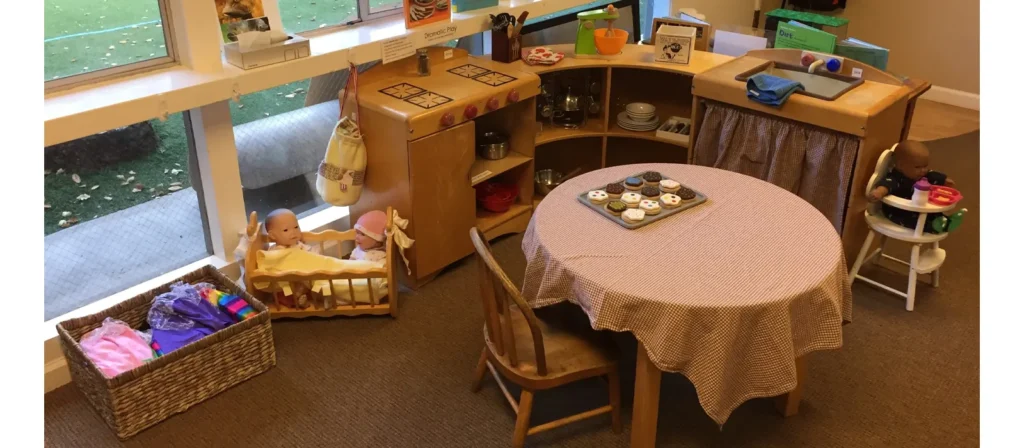
1. Create an Inviting Play Environment
The physical setup of a play space has a powerful influence on how children interact. To encourage associative play, the environment should feel open, welcoming, and flexible enough to allow spontaneous social interaction. Children are more likely to engage with peers when the space naturally brings them together. Instead of assigning specific uses to areas, allow children to interpret and adapt the space freely.
Seating arrangements, visibility, and traffic flow all matter. Low tables with multiple chairs, shared floor mats, and cozy corners invite children to gather and stay engaged longer. Avoid separating children with high shelves or too many individual stations, as this can unintentionally discourage communication. Keep materials accessible so that children feel empowered to explore and share.
2. Offer the Right Toys and Materials
Toys and supplies that are open-ended, easy to share, and rich in imaginative potential naturally encourage associative play. These items don’t require specific rules or outcomes, allowing children to explore side by side while commenting, imitating, and exchanging ideas freely.
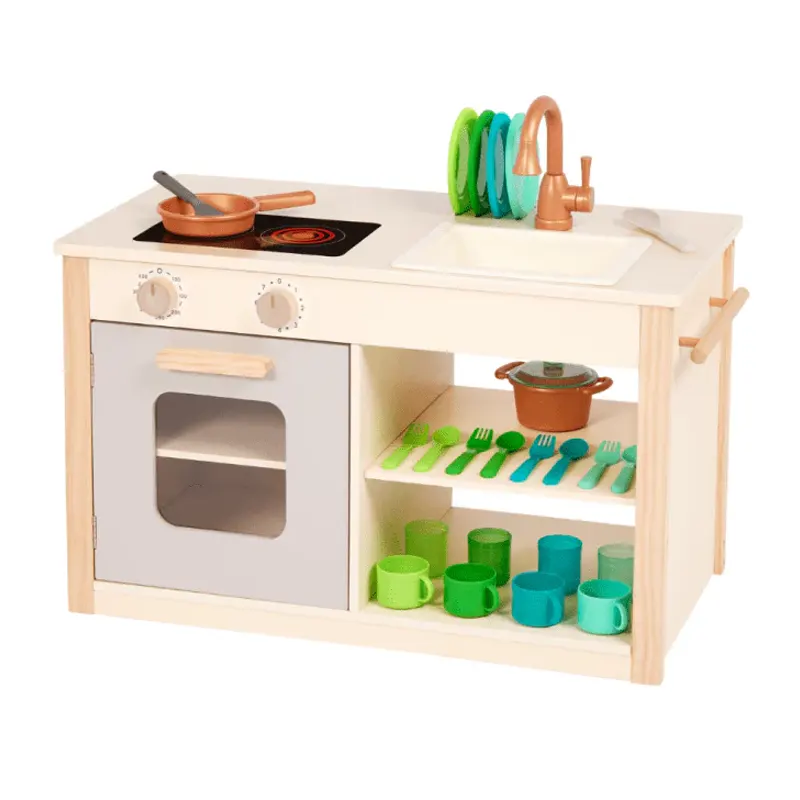
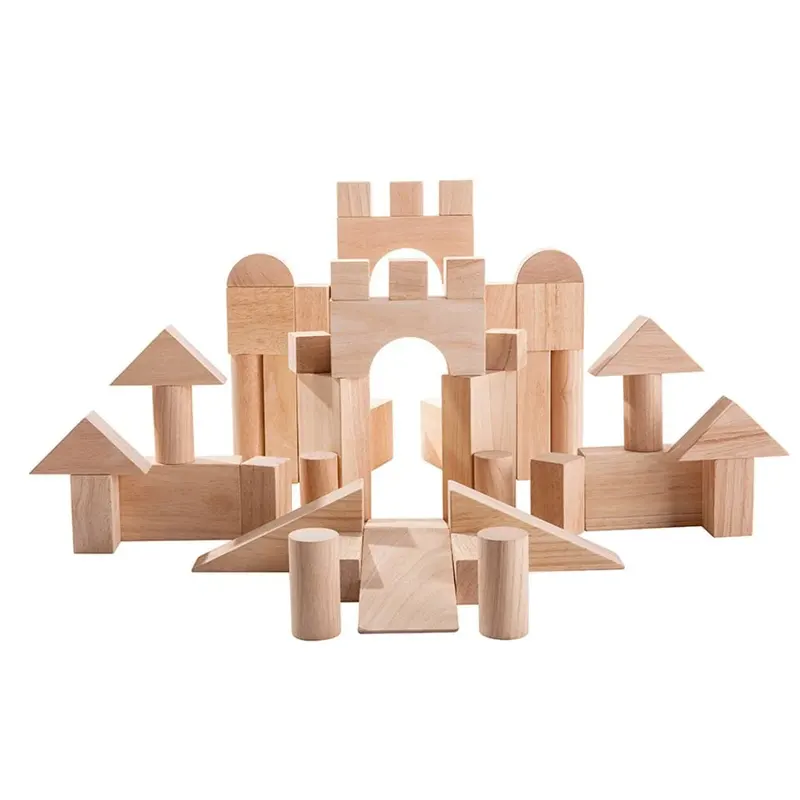
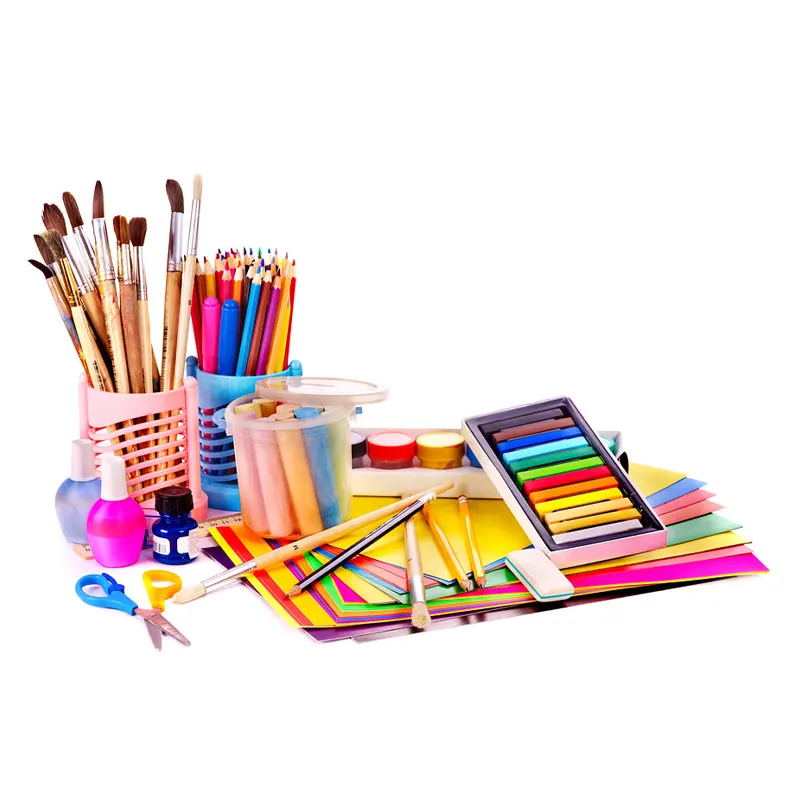
Here are some jouets éducatifs that support associative play:
- Role-play toys: Items like dress-up clothes, play kitchens, puppets, and doctor kits allow children to explore everyday roles and scenarios. These toys naturally spark conversation and shared storytelling, even when children are not following the same script.
- Construction toys: Building blocks, magnetic tiles, wooden planks, or large interlocking bricks give children opportunities to create side by side. They may not work on the same structure, but the act of building in proximity leads to comparison, admiration, and interaction.
- Creative art materials: Supplies such as crayons, watercolors, glue, scissors, and collage items are perfect for shared use at a communal art table. Children might not create the same artwork, but they will often talk about their process, colors, or ideas.
- Loose parts and open-ended materials: Objects like shells, buttons, fabric pieces, cardboard tubes, and wooden rings offer limitless possibilities. These materials encourage imaginative use and are ideal for collaborative exploration, especially in sensory or dramatic play setups.
Avoid toys that are highly electronic or that isolate the child (like tablets or single-user gadgets). The goal is not just shared use, but shared interest. Choosing toys that subtly invite interaction rather than demand it helps children engage with each other in ways that are genuine and developmentally appropriate for associative play.
Envoyez-nous un message si vous avez des questions ou si vous souhaitez obtenir un devis. Nos experts vous répondront dans les 48 heures et vous aideront à sélectionner le produit qui vous convient.
3. Encourage but Don’t Control
Let children take the lead. Adults can gently prompt interactions (“Why don’t you show her how your puzzle works?”) but should avoid directing the play. The unstructured nature of associative play means kids are developing social skills organically. Resist the urge to assign roles or dictate outcomes—this phase is more about interaction than achievement.
4. Model and Reinforce Positive Social Behavior
Children learn by watching adults. Use moments of play to model sharing, cooperation, and kind communication. If one child wants a toy another is using, help them find words like, “Can I play with that when you’re done?” This guidance helps children understand the dynamics of associative play while building confidence in their own social skills.
- Modeling friendly behavior such as sharing, asking questions, or offering help
- Encouraging collaboration by saying things like, “Can you help each other build a tower?”
- Narrating children’s actions to build awareness (“You’re both using the same color—how fun!”)
- Staying nearby but not controlling the play, allowing social dynamics to emerge naturally
5. Pair Children with Mixed Personalities and Interests
Diverse playgroups offer richer opportunities for social learning. Shy children may become more expressive around outgoing peers, while imaginative kids can inspire more structured thinkers. Mixing personalities during associative play creates space for new connections and helps children stretch their social comfort zones.
6. Provide Time for Unstructured Play Daily
Routine is key. Giving children time each day for unstructured, screen-free play invites more natural interaction. When kids have consistent opportunities to engage in associative play, they gradually become more confident and curious about others, easing their transition into more collaborative play.
Associative Play Activities: 8 Fun and Easy Examples
The best way to encourage associative play is to provide children with opportunities to interact while maintaining their own creative direction. These activities don’t require structured rules or teamwork, but they naturally invite conversation, material sharing, and mutual observation. Below are eight engaging activities that are easy to set up and ideal for preschoolers in the associative play stage.
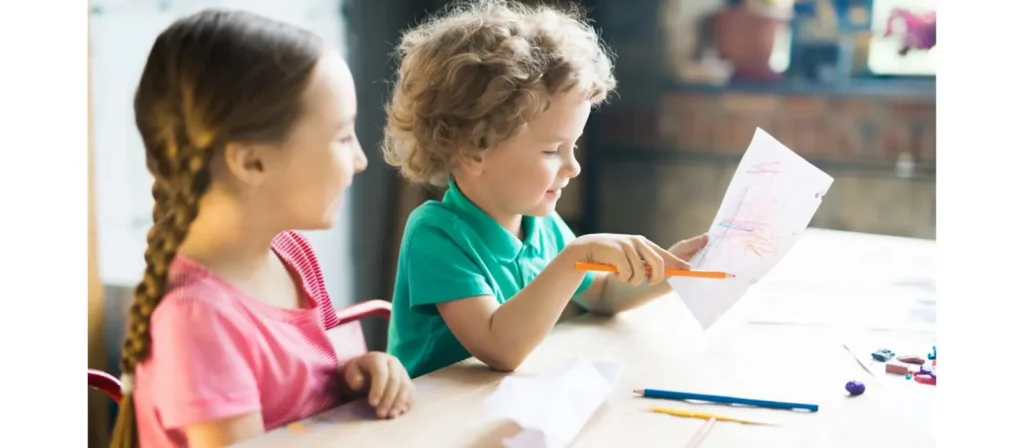
- Side-by-Side Drawing Table
Place a large table in the art area and provide paper, crayons, markers, and colored pencils. Each child sits with their own paper but draws alongside others using common supplies. The open table format allows for shared access without requiring a group project. - Play Kitchen Corner
Set up a dramatic play area with a play stove, sink, utensils, and pretend food. Children move within the same space, using the same kitchen setup to carry out their own cooking scenarios. The shared furniture and props offer many entry points for parallel use. - Sensory Bin Exploration
Prepare a sensory station with bins filled with rice, sand, or water beads. Provide tools like scoops, funnels, and small containers. Children use individual bins or a shared tub while seated close together, allowing them to engage in their own exploration with similar tools and materials. - Building with Large Blocks
Lay out foam or wooden building blocks on a carpet or mat in an open space. Children build independently within the same area, using blocks from a shared set. The size and accessibility of the materials support long periods of open-ended construction. - Doll Play with Separate Storylines
Arrange a collection of dolls, clothes, bottles, and toy beds or strollers in a cozy play space. Each child chooses their own items but remains within the same area to care for or dress their dolls. The shared environment allows simultaneous yet individual play. - Art Collage Station
Set out scissors, glue sticks, and a variety of collage materials such as magazine clippings, paper scraps, fabric, and stickers. Children sit at the same table and work on their own collage projects using the communal supplies. The setup allows for side-by-side creative expression without fixed outcomes. - Playdough Creation Station
Provide several tubs of playdough along with child-safe tools like rollers, cutters, and molds. Children gather around a single table or play surface and create their own shapes and figures. Materials are placed in the center to allow shared access while each child works individually. - Outdoor Chalk Drawing
Offer a set of chalk sticks and designate an area on the pavement or a chalkboard wall. Children each draw in their own space but use the same surface and materials. The open drawing area supports multiple children working simultaneously in close proximity.
Questions fréquemment posées
1. What is the main goal of associative play?
The primary goal of associative play is to help children develop early social skills by engaging in loosely interactive activities. It allows them to learn sharing, communication, and peer awareness without the pressure of formal collaboration.
2. Why is associative play important for child development?
Associative play is crucial for emotional, social, and language development. It helps children practice conversation, understand peer behavior, build friendships, and transition smoothly into more collaborative forms of play, like cooperative play.
3. What are the signs that a child is ready for associative play?
Signs include showing interest in other children’s activities, initiating conversation during play, offering or requesting toys, and mimicking peers. These behaviors suggest a child is beginning to shift from parallel play to more interactive experiences.
4. Should adults intervene during associative play?
Intervention should be minimal. Adults should observe and gently guide when necessary—such as supporting turn-taking or helping children express themselves—but should allow kids to lead the play to promote natural social learning.
5. Can children with delayed speech still engage in associative play?
Yes. While verbal communication supports associative play, children can still interact through gestures, imitation, and shared use of materials. It can even help support language growth in children with delays.
6. How long does the associative play stage last?
The duration varies by child, but associative play typically lasts through preschool years, gradually blending into cooperative play as children’s communication, empathy, and teamwork skills mature.
Conclusion
Associative play represents a meaningful step in a child’s social and emotional development. It allows children to explore shared space, materials, and interactions without the pressure of structured collaboration. Through simple activities like drawing side by side, building with blocks, or dressing up in the same area, children begin to develop the communication skills, empathy, and flexibility they will need for later cooperative relationships.
If you’re looking to design a preschool environment that supports meaningful, developmentally appropriate play, Gagner des enfants can help. With customizable preschool furniture and layout solutions, we help educators create spaces that truly nurture how children grow.

